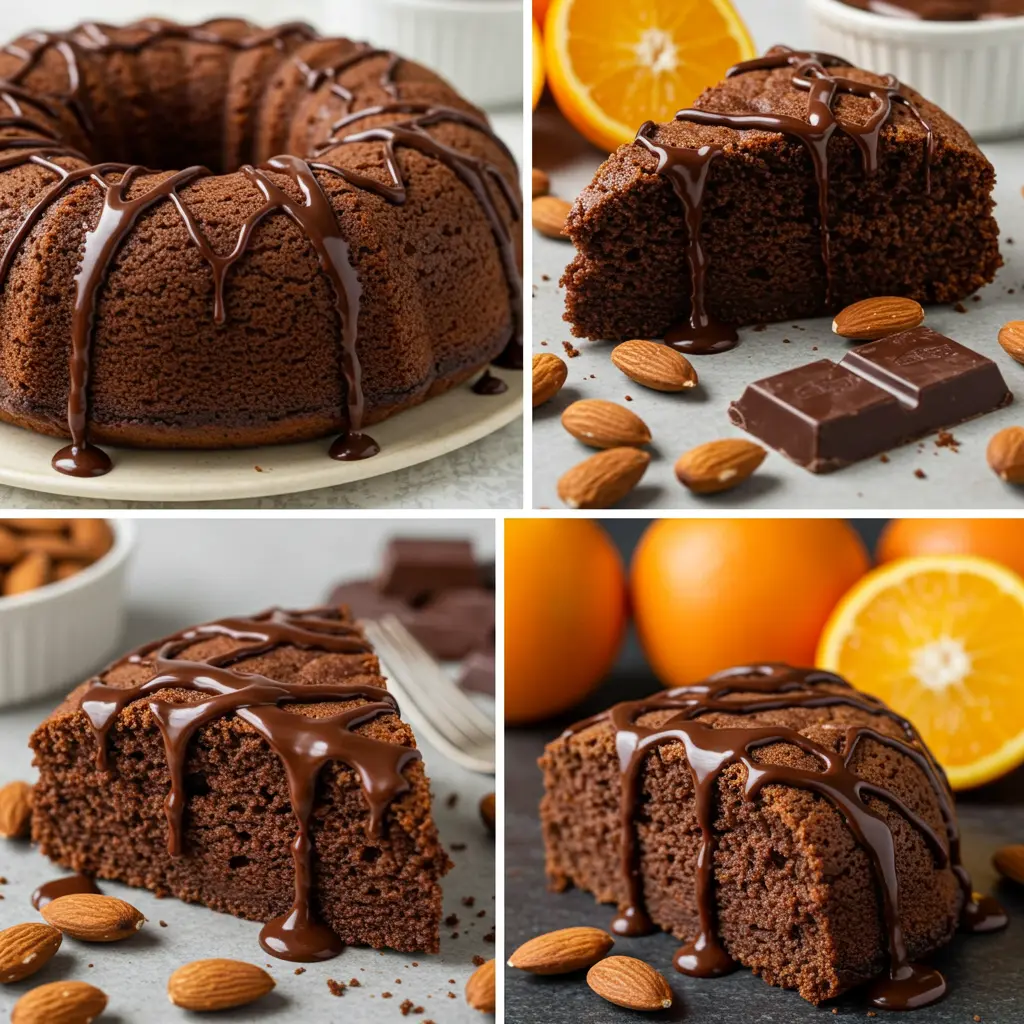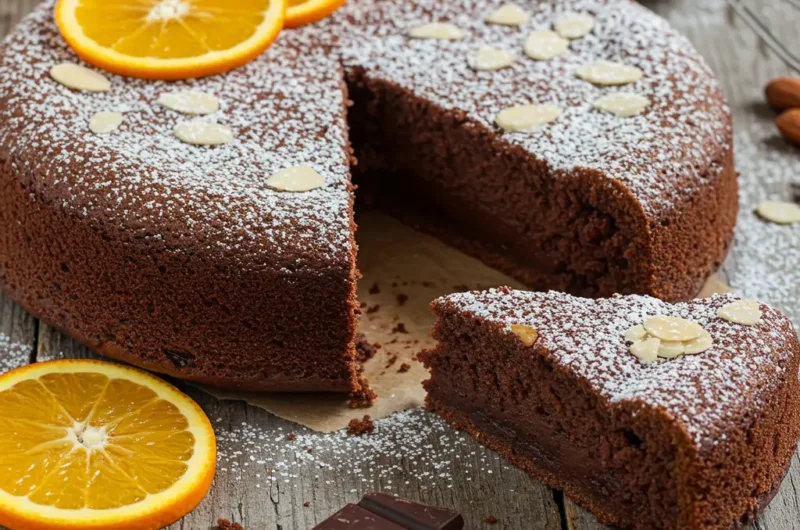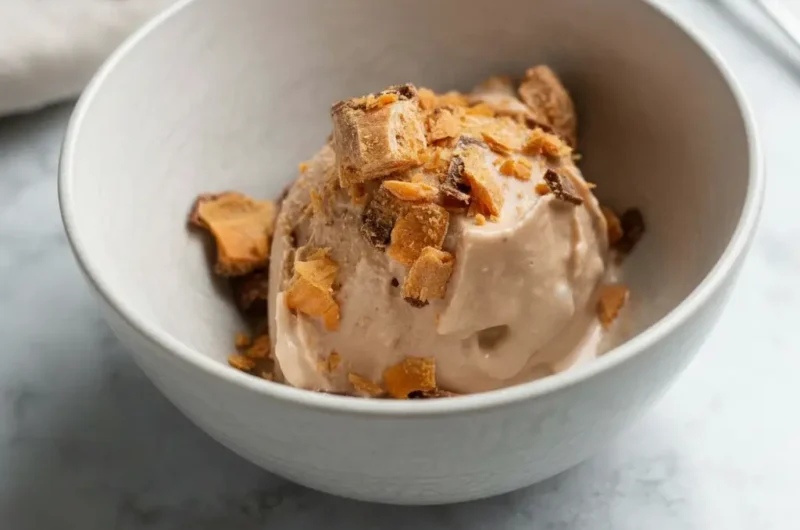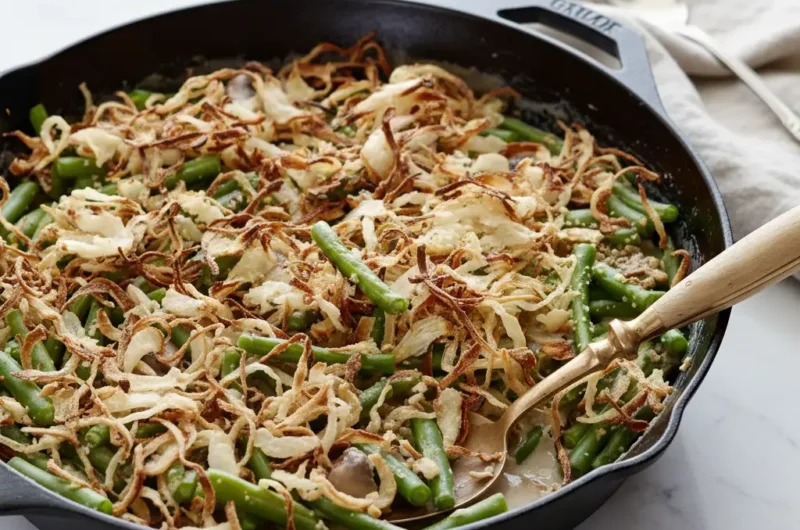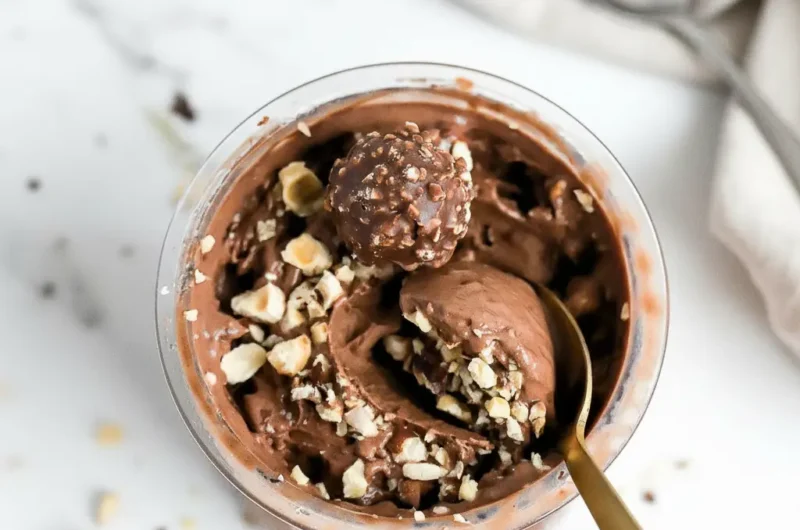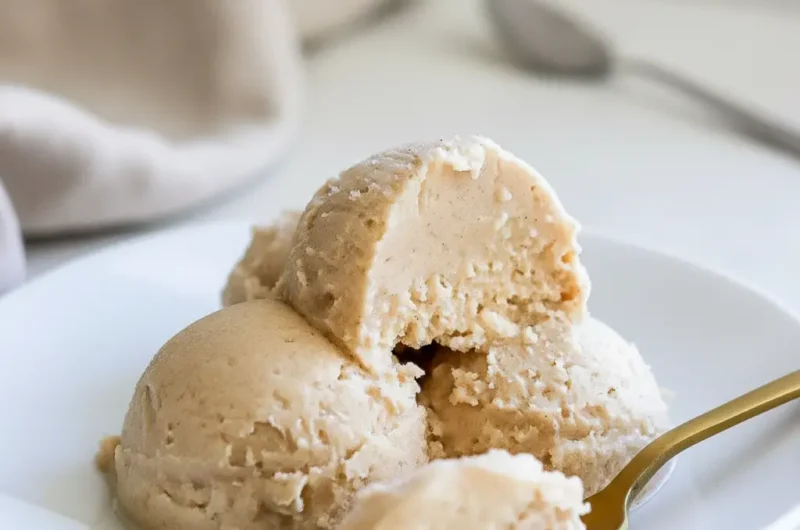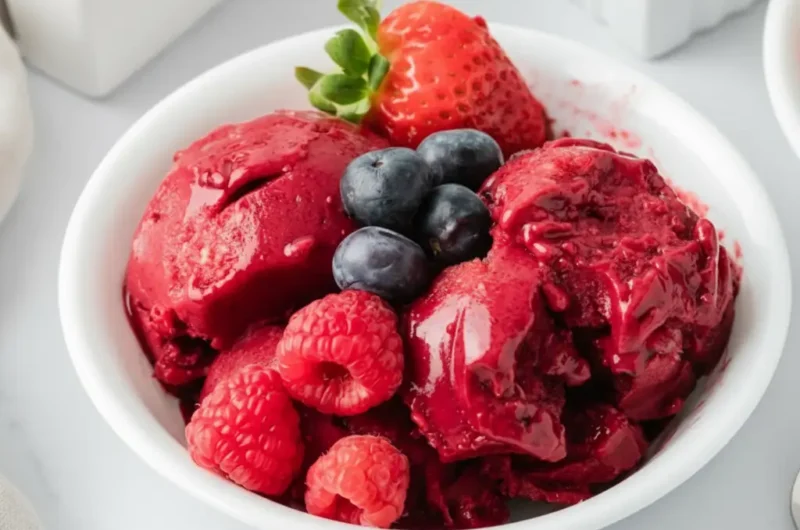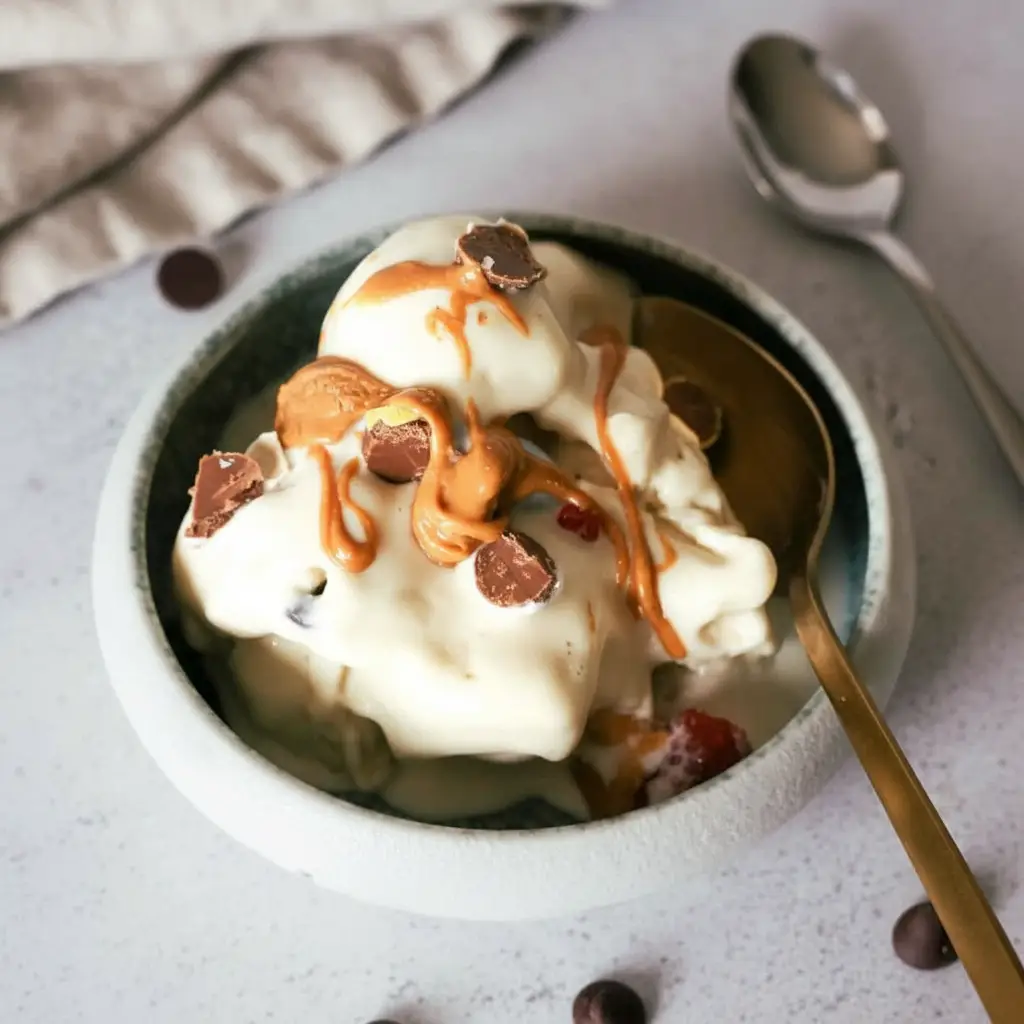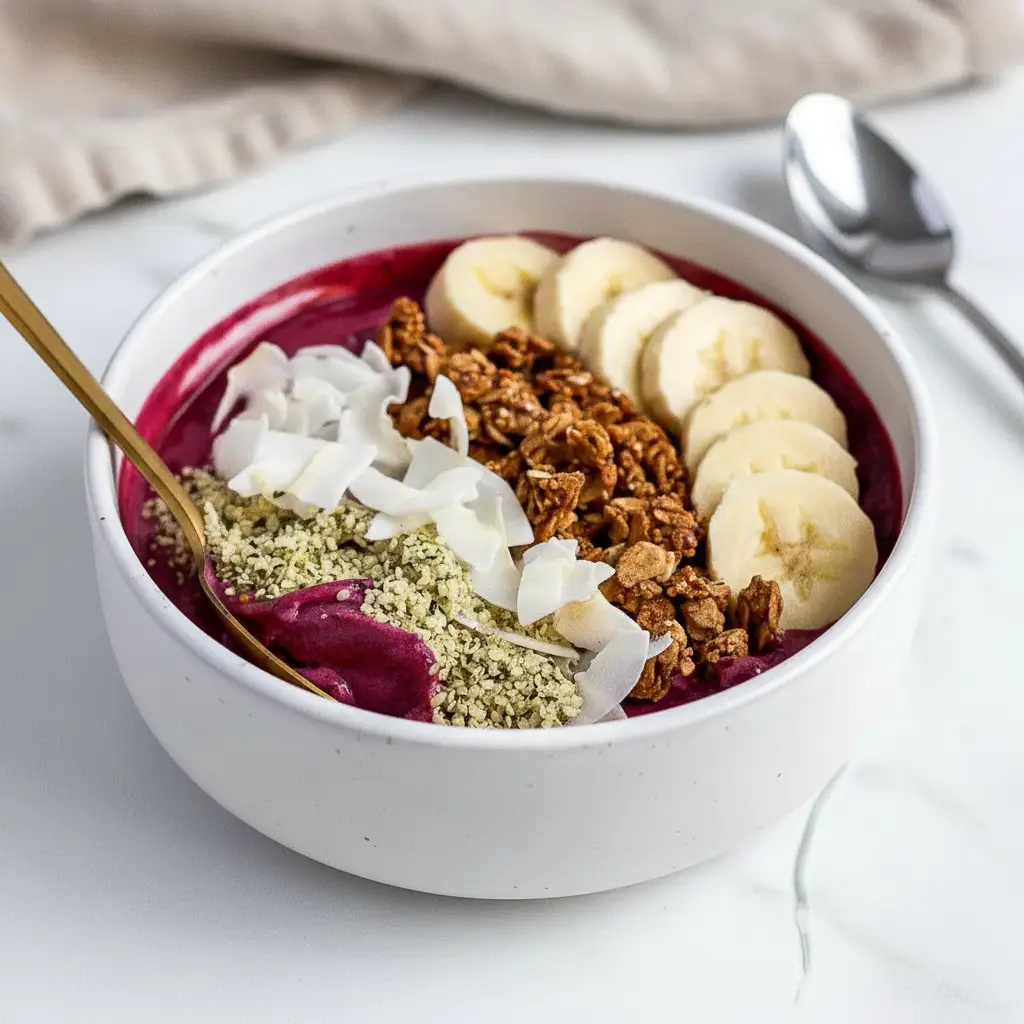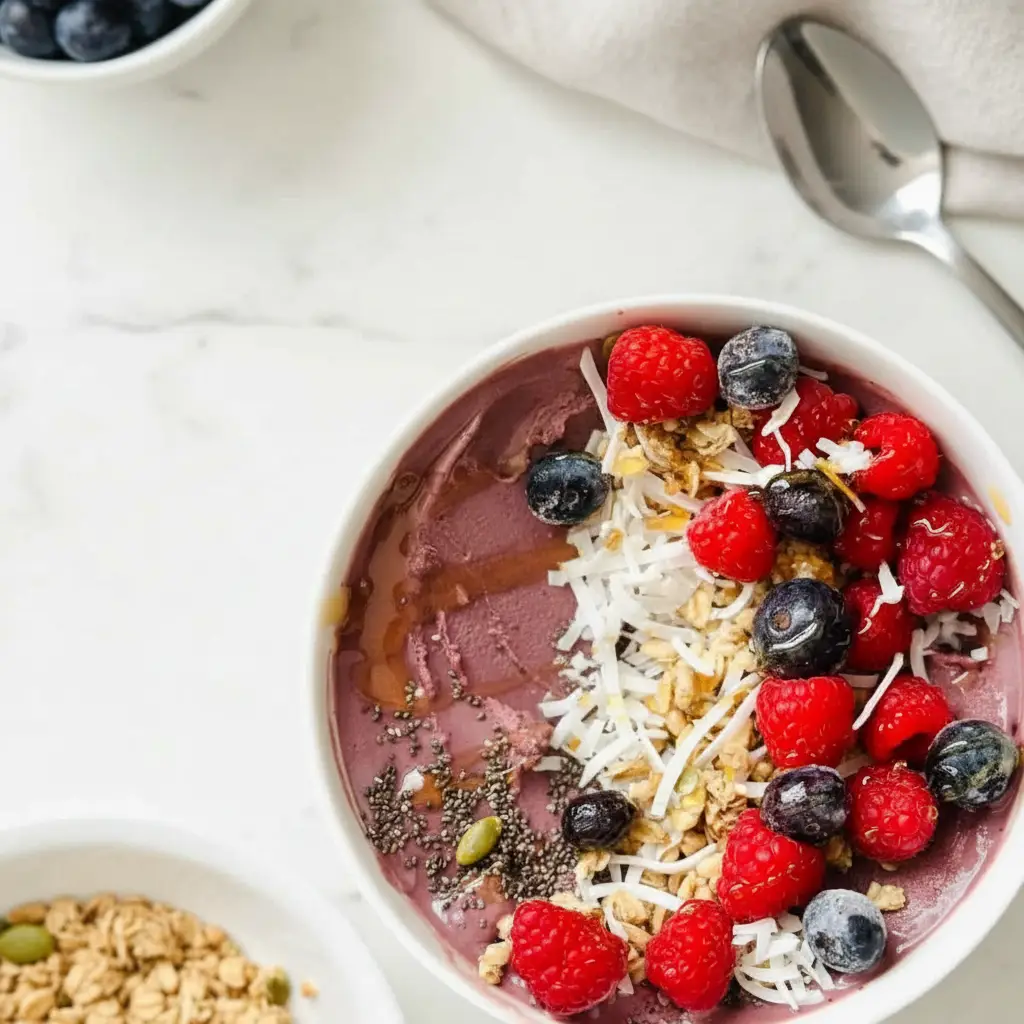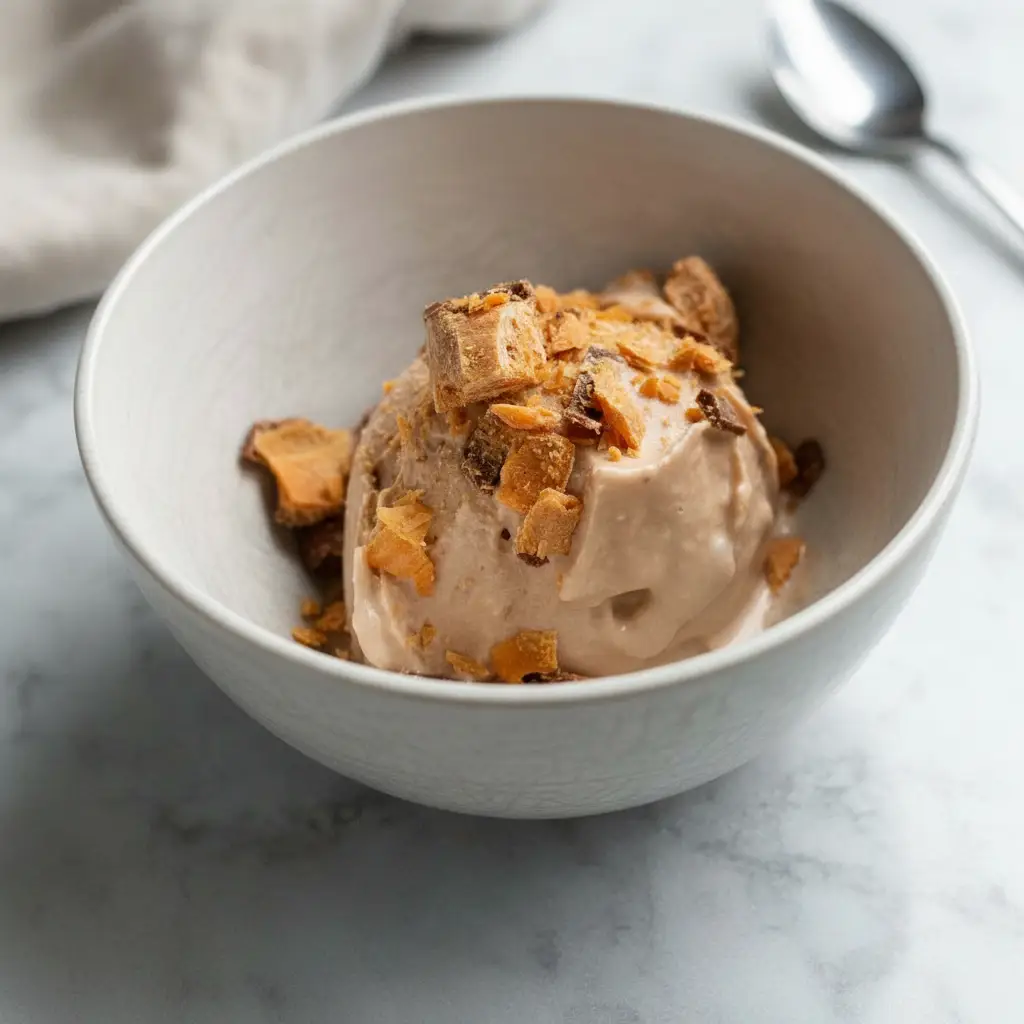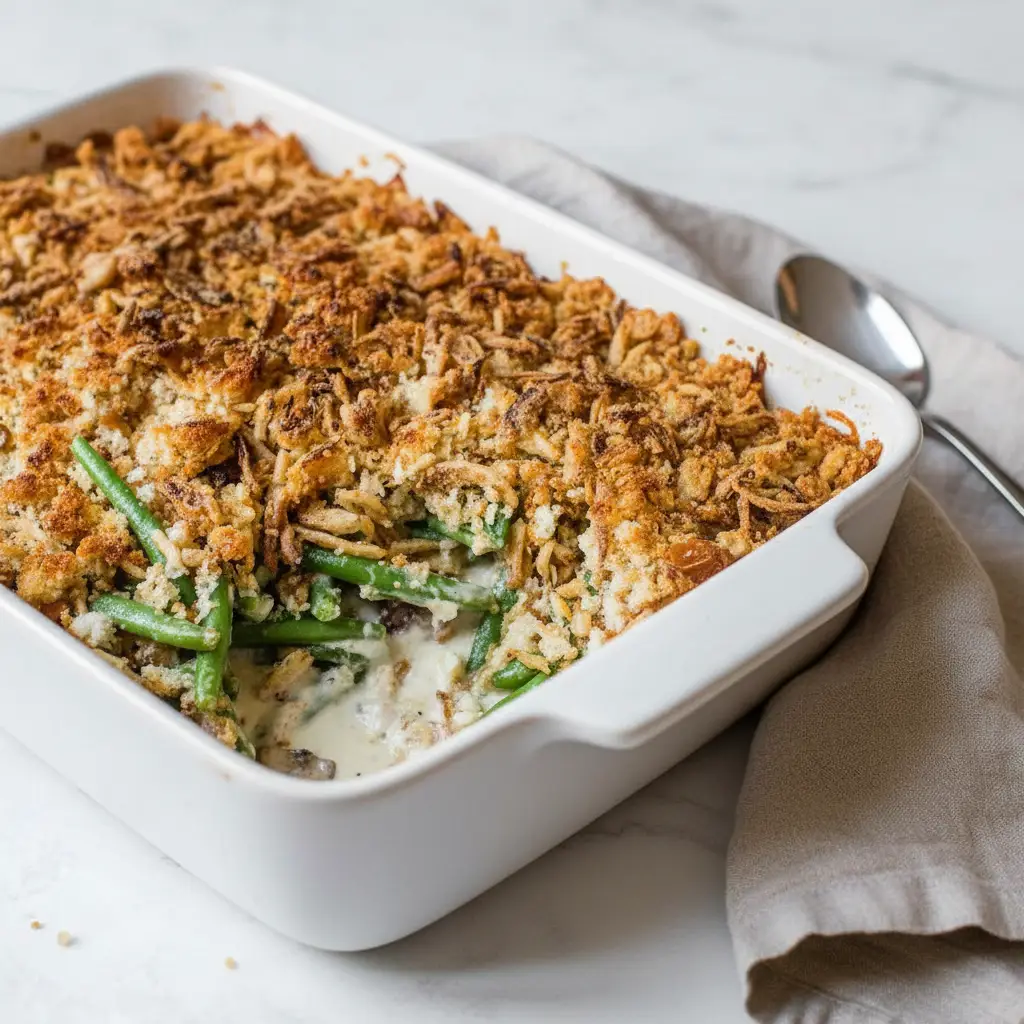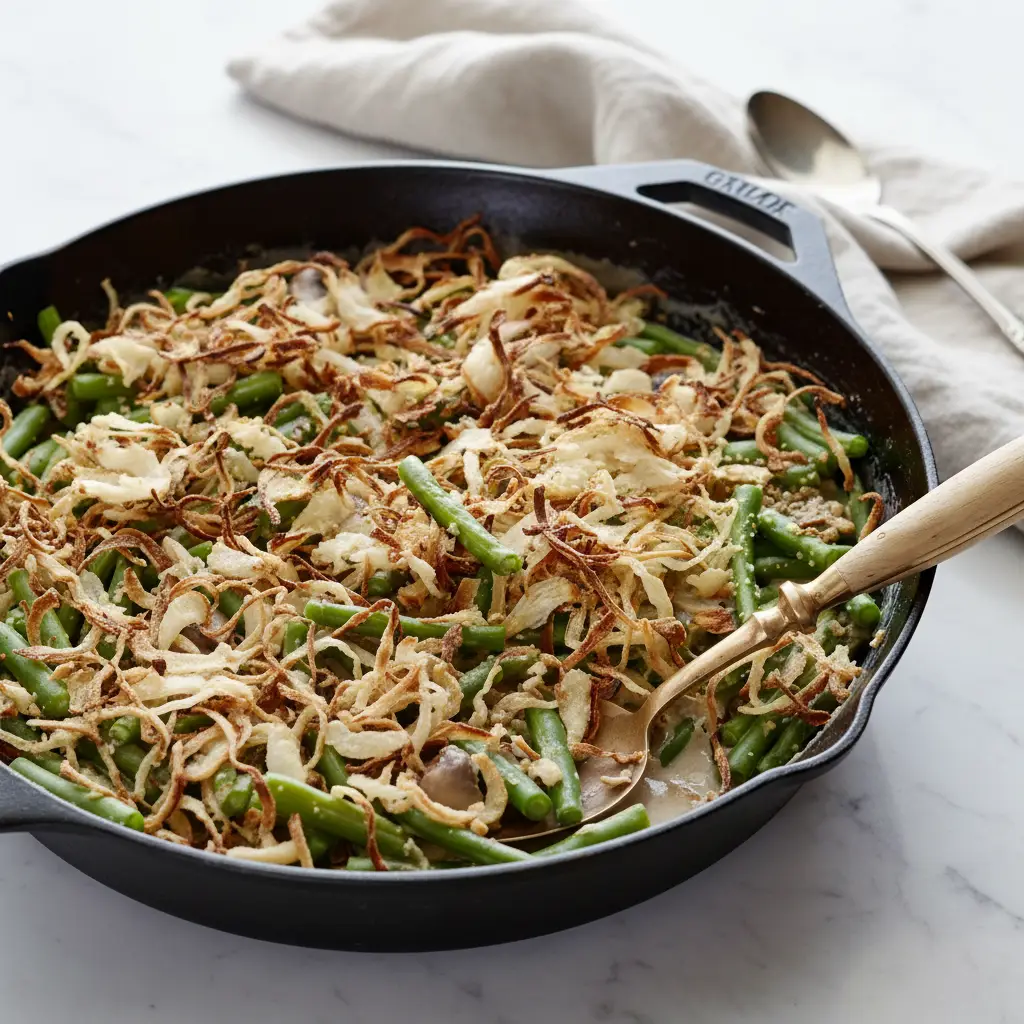If you’re looking for a dessert that combines rich flavors, delightful textures, and a touch of elegance, the prolific oven chocolate orange almond cake recipe is your answer.
This recipe is perfect for anyone who loves baking or wants to impress their friends and family with a show-stopping treat.
Prolific Oven Chocolate Orange Almond Cake Recipe
Course: Dessert, SnacksCuisine: American, EuropeanDifficulty: Intermediate12
slices20
minutes35
minutes350
kcal55
minutesA decadent and moist chocolate cake infused with fresh orange zest and crunchy almonds, offering a perfect balance of rich, citrusy, and nutty flavors.
Ingredients
1 ¾ cups all-purpose flour (or almond flour for a gluten-free option)
¾ cup unsweetened cocoa powder
1 ½ teaspoons baking powder
½ teaspoon baking soda
¼ teaspoon salt
1 cup granulated sugar
½ cup brown sugar
½ cup unsalted butter, softened
2 large eggs, at room temperature
1 teaspoon vanilla extract
Zest of 2 oranges
½ cup fresh orange juice
½ cup plain yogurt or sour cream
1 cup dark chocolate chunks (60-70% cocoa)
½ cup sliced almonds (toasted for crunch)
Directions
- Preheat the oven : Preheat your oven to 350°F (175°C). Grease a 9-inch round cake pan and line it with parchment paper.
- Prepare dry ingredients : In a bowl, whisk together flour, cocoa powder, baking powder, baking soda, and salt. Set aside.
- Cream butter and sugars : In a large mixing bowl, beat the butter, granulated sugar, and brown sugar until light and fluffy.
- Add wet ingredients : Beat in the eggs one at a time, followed by vanilla extract, orange zest, and orange juice. Mix until combined.
- Combine wet and dry mixtures : Gradually add the dry ingredients to the wet mixture, alternating with the yogurt or sour cream. Mix just until combined.
- Fold in chocolate and almonds : Gently fold in the chocolate chunks and half of the toasted almonds.
- Bake : Pour the batter into the prepared pan, smooth the top, and sprinkle the remaining almonds on top. Bake for 30-35 minutes, or until a toothpick inserted comes out clean.
- Cool : Let the cake cool in the pan for 10 minutes, then transfer to a wire rack to cool completely.
- Serve : Dust with powdered sugar or drizzle with chocolate ganache before serving, if desired.
Recipe Video
Notes
- Storage : Store the cake in an airtight container at room temperature for up to 2 days or refrigerate for longer storage. Bring to room temperature before serving.
- Substitutions : Use almond flour for a gluten-free option, or swap yogurt with buttermilk for a tangier flavor.
- Decorating tips : Add orange slices, edible flowers, or extra chocolate shavings for an elegant presentation.
- Toasting almonds : Toast almonds in a dry skillet over medium heat for 3-5 minutes, stirring frequently, until fragrant and golden.
Table of Contents
Secret #1: The Magic of Fresh Orange Zest
When it comes to adding flavor to your cake, fresh orange zest is a game-changer. It brings a bright, citrusy note that perfectly complements the richness of chocolate and the nuttiness of almonds.
But there’s more to it than just tossing in some zest—let’s explore why it’s so magical.
Why Orange Zest Works So Well
Enhances Flavor Naturally
- Boosts aroma : The oils in orange zest release a fragrant aroma that makes your cake smell irresistible.
- Balances sweetness : A hint of citrus cuts through the sweetness of chocolate, creating a balanced taste.
Adds Visual Appeal
- Bright color contrast : The tiny flecks of zest add a pop of color to your batter.
- Freshness factor : It signals to your guests that this cake is made with care and fresh ingredients.
How to Get the Most Out of Your Zest
Choosing the Right Oranges
- Look for organic oranges : Non-organic oranges may have pesticide residue on their skin.
- Pick firm, juicy fruits : These will yield more zest and juice for your recipe.
Tools You’ll Need
- Microplane grater : This tool ensures fine, even zest without the bitter white pith.
- Sharp knife : If you don’t have a grater, carefully peel the zest with a knife.
Tips for Using Orange Zest Effectively
Using orange zest isn’t just about sprinkling it into the batter. Here are some tips to maximize its impact:
Add It Early
- Mix with dry ingredients : This helps distribute the zest evenly throughout the batter.
- Infuse it in liquids : Steep zest in milk or cream for an extra layer of flavor.
Don’t Overdo It
- A little goes a long way : Too much zest can overpower the other flavors.
- Taste as you go : Adjust the amount based on your preference.
Orange zest might seem like a small detail, but it plays a big role in making this cake unforgettable.
By using fresh, high-quality zest and incorporating it thoughtfully, you’ll elevate the entire experience.
Secret #2: The Role of Almonds in Texture and Flavor
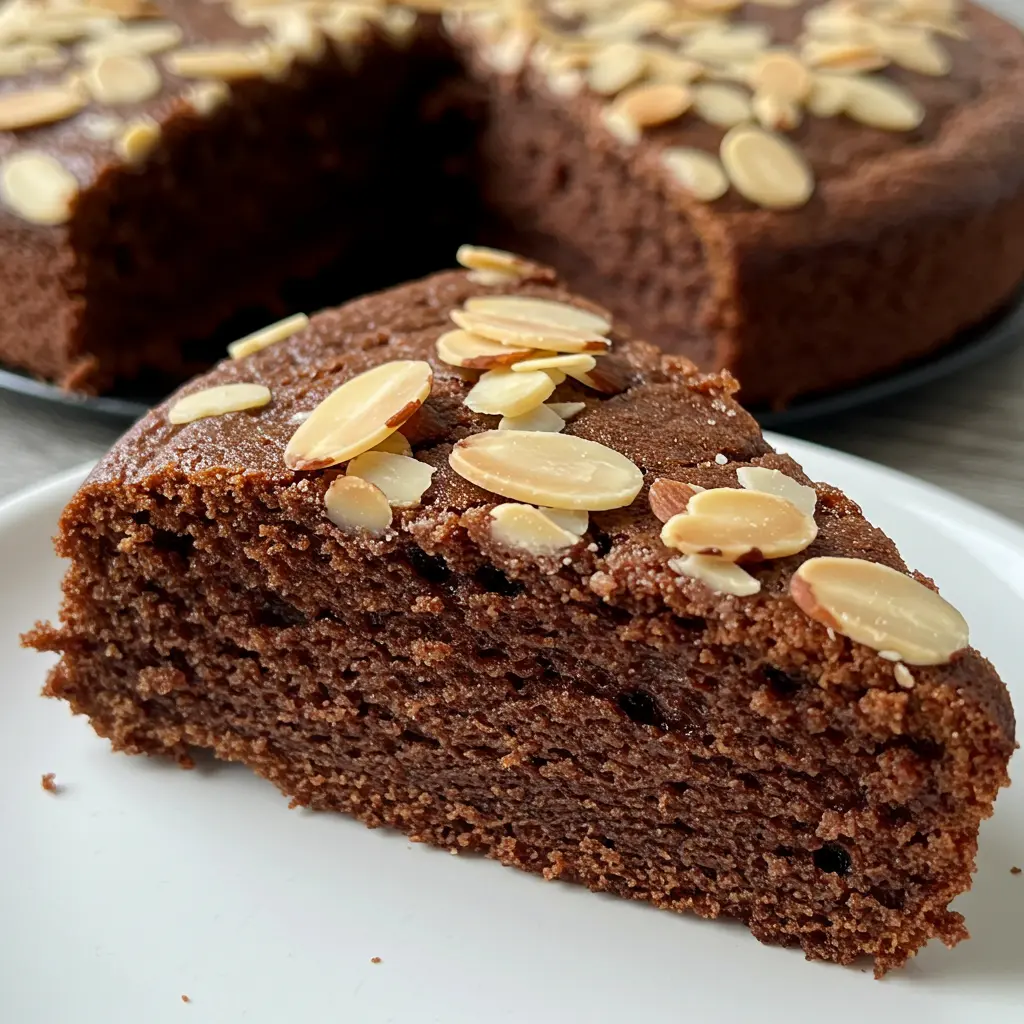
Almonds are more than just a crunchy snack—they’re a key ingredient that adds depth and texture to this cake.
Whether you use almond flour, sliced almonds, or almond extract, they bring a unique nuttiness that pairs beautifully with chocolate and orange.
Let’s explore how almonds enhance both the structure and flavor of your cake.
Why Almonds Are Essential
Adds Moisture Without Being Heavy
- Natural oils in almonds : These keep the cake moist without weighing it down.
- Light crumb texture : Almond flour creates a tender, melt-in-your-mouth consistency.
Complements Other Flavors
- Nutty undertones : Almonds provide a subtle earthiness that balances the sweetness of chocolate.
- Enhances orange zest : The combination of almond and citrus is a match made in dessert heaven.
Different Ways to Use Almonds
Almond Flour vs. Regular Flour
- Gluten-free option : Almond flour is perfect for those avoiding gluten.
- Richer flavor : It adds a buttery taste that regular flour can’t replicate.
Toppings and Garnishes
- Sliced almonds for crunch : Sprinkle them on top before baking for added texture.
- Toasted almonds for depth : Toasting enhances their natural flavor and aroma.
How to Incorporate Almonds Properly
Mixing Techniques
- Blend with dry ingredients : This ensures even distribution in the batter.
- Fold gently : Overmixing can deflate the batter, so handle it with care.
Pairing with Other Ingredients
- Chocolate chunks : Combine almonds with dark chocolate for a decadent twist.
- Zest infusion : The citrus notes from orange zest amplify the almond flavor.
Almonds are a versatile ingredient that not only improves the taste of your cake but also contributes to its overall texture.
Whether you’re using almond flour or adding toasted slices as a garnish, they’re sure to make your cake stand out.
Secret #3: Choosing the Right Chocolate
Chocolate is the heart and soul of this cake, so picking the right kind is essential. Not all chocolate is created equal, and the type you choose will significantly impact the flavor, texture, and overall success of your dessert.
Let’s explore what makes certain chocolates stand out and how to select the best one for your cake.
Understanding Chocolate Varieties
Dark Chocolate vs. Milk Chocolate
Dark chocolate brings a rich, intense flavor that pairs beautifully with orange zest and almonds.
It has less sugar, which allows the other ingredients to shine. On the other hand, milk chocolate is sweeter and creamier, offering a more indulgent experience.
For this recipe, dark chocolate is recommended because it balances the sweetness and enhances the cake’s sophistication.
Cocoa Content Matters
The percentage of cocoa in your chocolate affects both taste and texture. Higher cocoa content means a deeper, more robust flavor but also a slightly bitter edge.
For baking, aim for chocolate with 60-70% cocoa. This range provides the perfect balance of sweetness and richness without overwhelming the other ingredients.
How to Test Your Chocolate
Melting Quality
Good-quality chocolate should melt smoothly and evenly. If it becomes grainy or separates, it may not be the best choice for baking.
To test this, melt a small piece in the microwave or over a double boiler. The smoother the result, the better it will blend into your batter.
Taste Test
Before committing to a large amount, taste a small piece of the chocolate. Does it have a pleasant, well-rounded flavor? Is it too sweet or overly bitter? Trust your palate—your cake will only be as good as the ingredients you use.
Tips for Incorporating Chocolate
Shaving vs. Chunks
For a more uniform texture, shave or finely chop your chocolate before adding it to the batter.
If you prefer bursts of chocolate in every bite, use small chunks or chips. Both methods work well, so it’s up to your personal preference.
Pairing with Other Ingredients
Chocolate should complement, not overpower, the other flavors in your cake. To achieve this, mix it gently into the batter after combining wet and dry ingredients.
This ensures an even distribution and prevents clumping.
Choosing the right chocolate can make or break your cake. By understanding the nuances of different varieties and testing their quality, you’ll ensure your dessert is as delicious as it is memorable.
Secret #4: Perfect Baking Temperature and Time
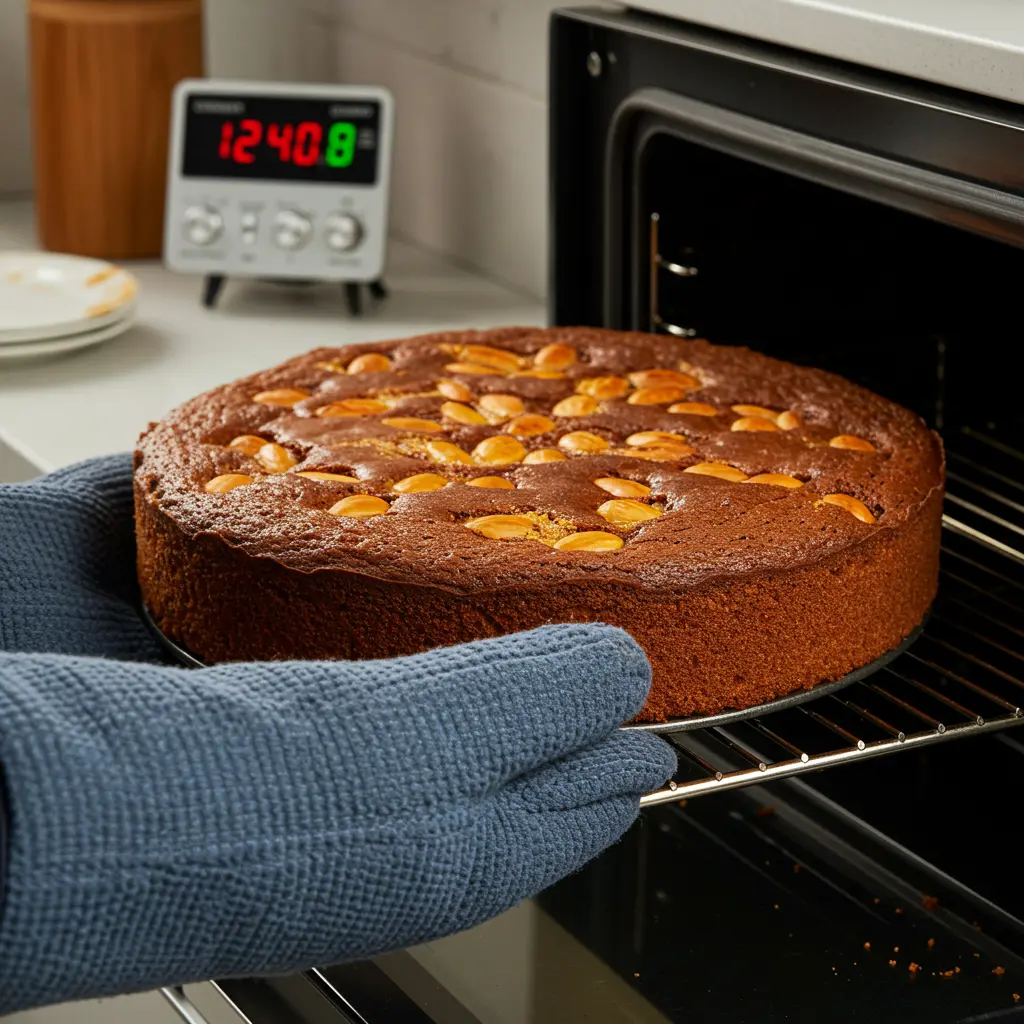
Creativity in baking is just as important as accuracy. Even the most carefully prepared batter can fall flat if the oven temperature or baking time isn’t just right.
Let’s dive into why these factors matter and how to get them spot-on for your prolific oven chocolate orange almond cake recipe.
Why Temperature Matters
Consistent Heat for Even Baking
An oven that’s too hot can cause the outside of your cake to burn while the inside remains undercooked.
Conversely, a low temperature can lead to a dense, soggy cake. For this recipe, preheating your oven to 350°F (175°C) is ideal.
This moderate heat ensures the cake bakes evenly, with a golden crust and a soft, moist interior.
Avoiding Hot Spots
Every oven has its quirks, including hot spots that can cause uneven baking. To combat this, rotate your cake halfway through the baking time.
This simple step helps distribute the heat more evenly and prevents one side from browning too quickly.
How to Determine Baking Time
Signs Your Cake Is Ready
The exact baking time will vary depending on your oven and the size of your cake pan, but most cakes are done in 30-35 minutes.
To test if the cake is done, place a toothpick in the middle. If it pulls out clean or with a couple of damp crumbs, the cake is finished. If batter sticks to the toothpick, let it bake a bit longer.
Adjusting for Altitude
If you live at a higher altitude, baking times and temperatures may need tweaking. Lower air pressure can cause cakes to rise too quickly and then collapse.
To counteract this, reduce the oven temperature by 25°F and increase the baking time slightly.
Tips for Achieving the Perfect Bake
Preheating Is Key
Make sure to warm up the oven ahead of time before putting the cake in. Skipping this step can lead to uneven baking, as the cake won’t start cooking at the correct temperature.
Use an Oven Thermometer
Oven dials aren’t always accurate, so using an oven thermometer can help you ensure the temperature is precise.
Place it on the middle rack and adjust your oven settings as needed based on the reading.
Cooling Matters Too
Once your cake is baked, let it cool in the pan for about 10 minutes before transferring it to a wire rack.
This prevents the cake from becoming soggy or sticking to the pan. Cooling completely before decorating or serving also ensures the flavors meld together beautifully.
Perfecting your baking temperature and time might take a little practice, but it’s worth the effort.
With careful attention to these details, your cake will emerge from the oven looking and tasting like a masterpiece.
Secret #5: Moisture-Rich Ingredients
Moisture is the secret to a cake that’s soft, tender, and utterly irresistible. Without it, even the most flavorful cake can turn out dry and crumbly.
In this section, we’ll explore how to incorporate moisture-rich ingredients into your prolific oven chocolate orange almond cake recipe to ensure every bite is as luscious as the last.
Why Moisture Matters
The Science Behind Moisture
Cakes rely on moisture to create a soft, melt-in-your-mouth texture. Ingredients like eggs, butter, and milk not only add flavor but also contribute to the cake’s structure by keeping it hydrated.
When these ingredients are balanced correctly, they prevent the cake from drying out during baking.
- Eggs act as binders : They hold the batter together while adding richness.
- Butter adds silkiness : Its fat content ensures a velvety crumb.
Avoiding Dryness
Dry cakes are often the result of overbaking or using too little liquid. To avoid this, measure your ingredients carefully and stick to the recommended baking time.
Adding ingredients like yogurt or sour cream can also boost moisture levels, giving your cake an extra layer of tenderness.
Key Moisture-Rich Ingredients
Yogurt or Sour Cream
Yogurt and sour cream are baking powerhouses when it comes to moisture. They add a subtle tang that enhances the chocolate and orange flavors while keeping the cake soft and fluffy.
- Choose full-fat options : These provide the richest texture and flavor.
- Stir gently : Overmixing can deflate the batter, so fold these ingredients in carefully.
Fresh Orange Juice
In addition to orange zest, fresh orange juice can be a game-changer for moisture. It infuses the cake with a burst of citrus flavor while contributing to its tender crumb.
- Use freshly squeezed juice : Bottled juice often contains additives that can alter the taste.
- Add sparingly : Too much liquid can make the batter too thin, so use it in moderation.
Tips for Maximizing Moisture
Don’t Overmix the Batter
Overmixing can lead to a dense, dry cake. Mix just until the ingredients are combined, and no further.
This preserves the air pockets created during mixing, which help keep the cake light and moist.
- Fold gently : Use a spatula to combine wet and dry ingredients without deflating the batter.
- Stop when streaks remain : A few streaks of flour are okay—they’ll disappear as you finish mixing.
Store Properly
Even the moistest cakes can dry out if not stored correctly. Keep your cake in an airtight container at room temperature for up to two days, or refrigerate it for longer storage.
- Wrap tightly : Use plastic wrap or foil to seal in moisture.
- Bring to room temperature before serving : This restores the cake’s softness and flavor.
By focusing on moisture-rich ingredients and techniques, you can ensure your cake stays soft, tender, and delicious long after it comes out of the oven.
Secret #6: Decorating Tips for a Stunning Finish
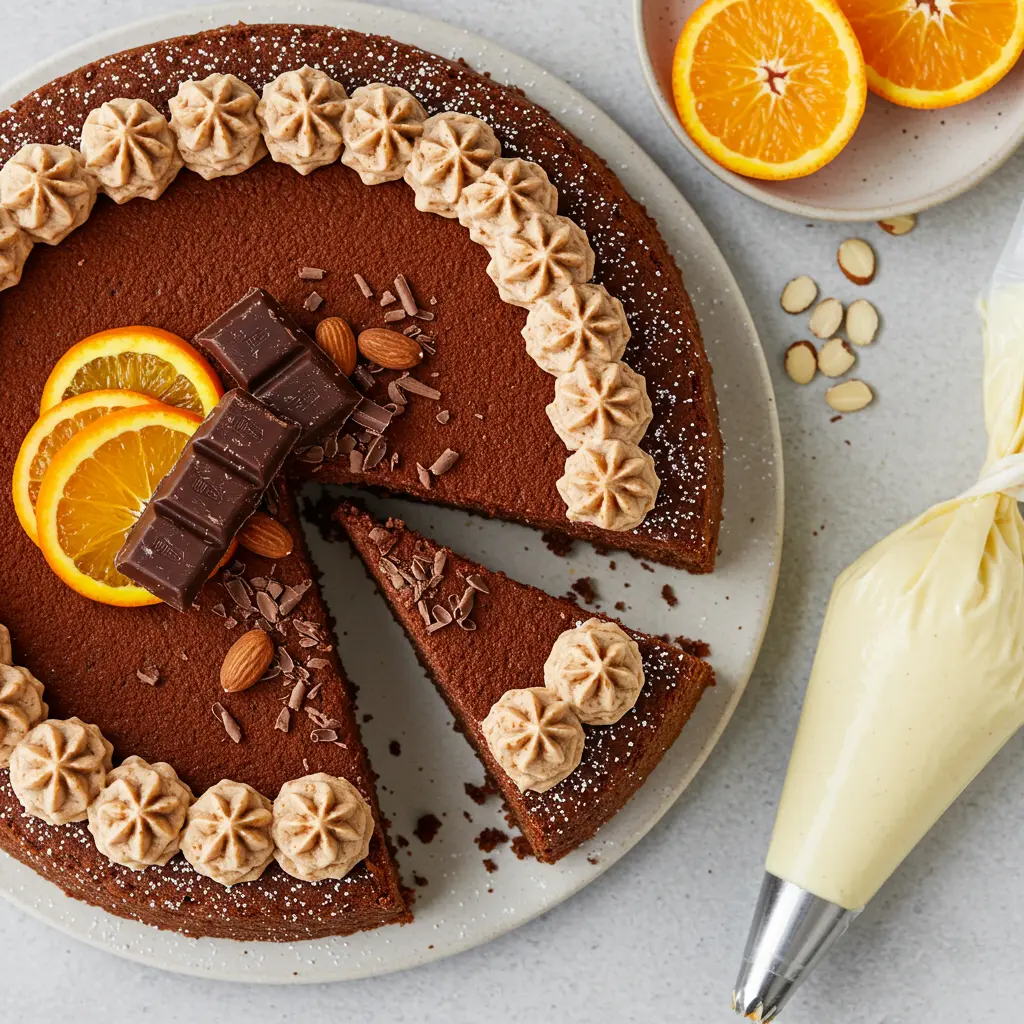
The final touch to any cake is its decoration. While taste is king, a beautifully decorated cake is a feast for the eyes and adds a wow factor to your dessert.
Let’s explore how to decorate your prolific oven chocolate orange almond cake recipe recipe in a way that’s both simple and stunning.
Choosing the Right Decorations
Keep It Simple
You don’t need elaborate tools or skills to create a beautiful cake. Sometimes, less is more.
A light dusting of powdered sugar or a drizzle of chocolate ganache can elevate your cake without overwhelming it.
- Powdered sugar : Adds elegance with minimal effort.
- Chocolate shavings : Create a sophisticated look with store-bought or homemade shavings.
Match the Theme
Consider the occasion when decorating your cake. For a casual family gathering, a rustic look with sliced almonds and orange zest might be perfect.
For a formal event, smooth frosting and edible flowers can add a touch of refinement.
- Rustic charm : Sprinkle chopped nuts or citrus zest for a natural, homey feel.
- Elegant flair : Use piped frosting or gold leaf accents for a polished appearance.
Tools You’ll Need
Basic Decorating Supplies
You don’t need a professional pastry kit to decorate your cake. A few basic tools can help you achieve professional-looking results.
- Offset spatula : Perfect for spreading frosting evenly.
- Piping bag : Great for adding decorative touches like swirls or dots.
Creative Alternatives
If you don’t have specialized tools, get creative with what you have at home. A zip-top bag with the corner snipped off can serve as a makeshift piping bag, and a butter knife works well for spreading frosting.
- DIY piping bag : Use a plastic bag for easy cleanup.
- Household items : Spoons, forks, or even toothpicks can create unique textures and patterns.
Final Touches
Add Fresh Elements
Fresh fruits or herbs can add color and freshness to your cake. Slices of orange or sprigs of mint not only look beautiful but also enhance the flavor profile.
- Citrus slices : Place them artfully on top for a pop of color.
- Herb garnishes : Mint or thyme leaves add a fragrant, unexpected twist.
Balance Sweetness with Texture
To keep your cake visually interesting, mix textures in your decorations. Combine smooth frosting with crunchy nuts or delicate chocolate curls for a dynamic finish.
- Layer textures : Alternate between smooth, crunchy, and glossy elements.
- Play with height : Stack decorations to create dimension and depth.
With these decorating tips, you can transform your cake into a show-stopping centerpiece that’s as beautiful as it is delicious.
Secret #7: Storing and Serving the Cake
Once your prolific oven chocolate orange almond cake recipe is baked and decorated, the final step is storing and serving it properly.
This ensures that every slice tastes as fresh and flavorful as when it first came out of the oven.
Let’s explore how to keep your cake in perfect condition and present it in a way that delights your guests.
How to Store Your Cake
Room Temperature Storage
If you plan to serve the cake within a day or two, storing it at room temperature is perfectly fine.
Use an airtight container or cover it with plastic wrap to prevent it from drying out.
- Avoid direct sunlight : Keep the cake in a cool, shaded spot to maintain its texture.
- Limit exposure to air : Air can cause the cake to stale faster, so seal it tightly.
Refrigeration for Longer Shelf Life
For cakes with perishable ingredients like fresh cream or yogurt, refrigeration is essential. Place the cake in an airtight container or cover it with foil before chilling.
- Bring to room temperature before serving : Cold cakes can taste dense, so let them sit out for 30 minutes before slicing.
- Prevent fridge odors : Cover the cake well to avoid absorbing unwanted smells from the refrigerator.
Tips for Serving
Presentation Matters
How you serve your cake can make a big difference in how it’s received. Use a sharp knife to cut clean slices, and wipe the blade between cuts for neat portions.
- Warm slightly for extra indulgence : A few seconds in the microwave can enhance the flavors and soften the texture.
- Pair with complementary beverages : Serve with coffee, tea, or even a glass of dessert wine to elevate the experience.
Portion Control
Cutting the cake into even slices ensures everyone gets a fair share. For a standard round cake, start by cutting it in half, then divide each half into equal portions.
- Use a ruler for precision : If you’re aiming for uniform slices, measure the cake’s diameter and mark where to cut.
- Save leftovers properly : Wrap uneaten slices individually to preserve freshness.
Common Mistakes to Avoid
Storing Without Protection
Leaving your cake uncovered, even for a short time, can cause it to dry out or absorb odors. Always use a container or wrap it securely.
- Don’t leave it out overnight : Extended exposure to air can ruin the texture.
- Avoid stacking without separators : If storing multiple layers, place parchment paper between them to prevent sticking.
Overcrowding the Fridge
Cramming your cake into a packed refrigerator can lead to squished decorations or uneven cooling. Make sure there’s enough space around the cake for proper airflow.
- Choose the right shelf : Store the cake on a middle or top shelf where temperatures are more consistent.
- Keep away from strong-smelling foods : Onions, garlic, or spices can alter the cake’s flavor.
By following these storage and serving tips, you’ll ensure your cake stays fresh, looks beautiful, and tastes amazing every time it’s served.
Step-by-Step Instructions for Making the Cake
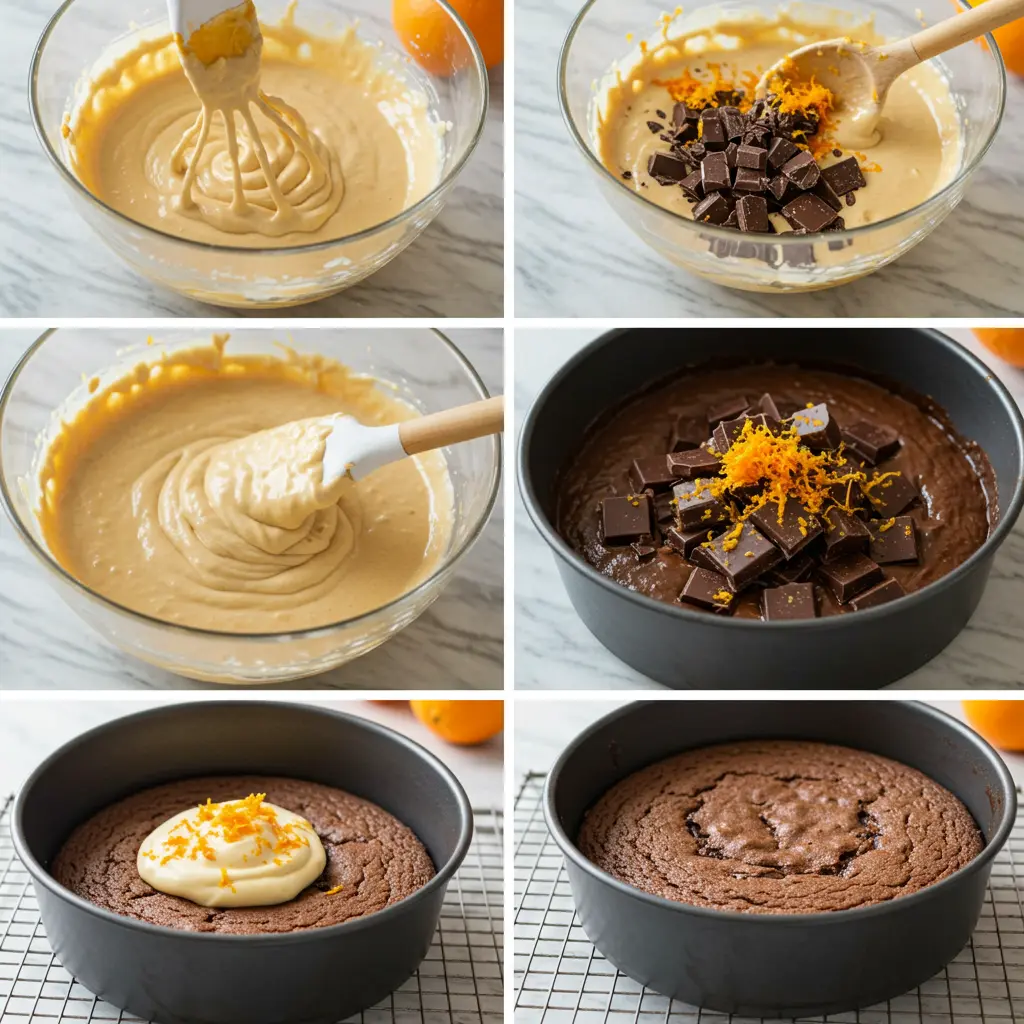
Now that we’ve covered the secrets to baking and presenting the perfect prolific oven chocolate orange almond cake recipe, let’s walk through the process step by step.
These clear instructions will guide you from gathering your ingredients to pulling a flawless cake out of the oven.
Preparing Your Ingredients
Gather Everything You Need
Before you start mixing, make sure all your ingredients are prepped and ready to go.
This includes zesting and juicing your oranges, measuring out the chocolate, and toasting the almonds if needed.
- Mise en place : Lay out all your ingredients to streamline the process.
- Room temperature matters : Take butter and eggs out of the fridge ahead of time for easier mixing.
Preheat Your Oven
Set your oven to 350°F (175°C) and prepare your cake pan by greasing it lightly or lining it with parchment paper.
This ensures the cake doesn’t stick and comes out cleanly after baking.
- Check your oven thermometer : Verify the temperature for accuracy.
- Prepare the pan thoroughly : Even nonstick pans benefit from a light coating of butter or flour.
Mixing the Batter
Combine Dry Ingredients First
Using a large bowl, mix the flour, cocoa powder, baking powder, and salt with a whisk. This ensures even distribution of the dry ingredients, which helps the cake bake uniformly.
- Sift for smoothness : Sifting removes lumps and aerates the dry ingredients.
- Add almond flour here : If using almond flour, mix it in with the other dry components.
Blend Wet Ingredients Separately
In a different bowl, whip the butter and sugar until it reaches a light, fluffy consistency. Then, add the eggs one at a time, followed by the orange zest, juice, and any extracts.
- Creaming is key : Beat the butter and sugar long enough to incorporate air, which makes the cake lighter.
- Mix gently after adding eggs : Overmixing can cause the batter to become dense.
Baking the Cake
Combine Wet and Dry Mixtures
Gradually add the dry ingredients to the wet mixture, alternating with milk or yogurt. Stir just until combined—don’t overmix.
Fold in the chocolate chunks or shavings at the end.
- Alternate additions : Start and end with the dry ingredients to prevent curdling.
- Scrape the bowl : Ensure all ingredients are fully incorporated without overworking the batter.
Bake Until Perfect
Spoon the batter into the ready pan and flatten the surface with a spatula. Place it in the preheated oven and bake for 30-35 minutes, or until a toothpick inserted in the center comes out clean.
- Rotate halfway through : This ensures even baking and browning.
- Cool before decorating : Let the cake rest in the pan for 10 minutes, then transfer it to a wire rack to cool completely.
By following these step-by-step instructions, you’ll create a cake that’s rich in flavor, perfectly textured, and ready to impress anyone who tries it.
Common Mistakes to Avoid When Baking This Cake
Even the most experienced bakers can make mistakes, especially when working with a recipe as intricate as the prolific oven chocolate orange almond cake recipe.
To help you avoid common pitfalls, let’s break down some of the most frequent errors and how to steer clear of them.
Overmixing the Batter
Why It Happens
Overmixing is a common mistake that occurs when bakers try to ensure all ingredients are perfectly combined.
However, overworking the batter can lead to a dense, tough cake instead of a light and fluffy one.
- Gluten development : Mixing too much activates gluten in the flour, making the cake chewy.
- Loss of air bubbles : Overmixing deflates the air pockets created during creaming, resulting in a flat cake.
How to Avoid It
Mix just until the ingredients are combined, and no further. Use a spatula for the final fold-ins, and stop as soon as you see streaks of flour disappearing.
- Fold gently : Use a light hand when incorporating delicate ingredients like chocolate chunks or orange zest.
- Trust your instincts : A few lumps are okay—they’ll smooth out during baking.
Using Stale or Low-Quality Ingredients
Why It Matters
The quality of your ingredients directly impacts the taste and texture of your cake. Using stale chocolate, old nuts, or bottled orange juice can result in a lackluster dessert.
- Stale chocolate : Can taste waxy or bland, ruining the richness of the cake.
- Old almonds : Lose their nutty flavor and crunch, making them less effective in the recipe.
How to Fix It
Always opt for fresh, high-quality ingredients. Taste-test your chocolate and nuts before adding them to the batter to ensure they’re flavorful and fresh.
- Buy in small quantities : Purchase ingredients like nuts and chocolate in amounts you’ll use quickly to avoid staleness.
- Store properly : Keep chocolate in a cool, dry place and nuts in the fridge to extend their shelf life.
Skipping the Cooling Step
Why It’s Important
Cooling your cake before frosting or serving is crucial for both texture and presentation.
Cutting into a warm cake can cause it to crumble, and frosting a warm cake will result in a melted mess.
- Structural integrity : Cooling allows the cake to set, making it easier to handle.
- Better flavor melding : Cooling gives the flavors time to develop and harmonize.
How to Do It Right
Allow the cake to cool in the pan for 10 minutes, then move it to a cooling rack to finish cooling.
If you’re in a hurry, you can speed up the process by placing the cake in the fridge, but avoid freezing it.
- Use a timer : Set a reminder to check the cake after 30 minutes to ensure it’s cooled enough.
- Patience pays off : Resist the urge to rush this step—it’s worth the wait.
By avoiding these common mistakes, you’ll set yourself up for success and ensure your cake turns out as delicious and beautiful as possible.
Why You Need to Try the Prolific Oven Chocolate Orange Almond Cake Recipe
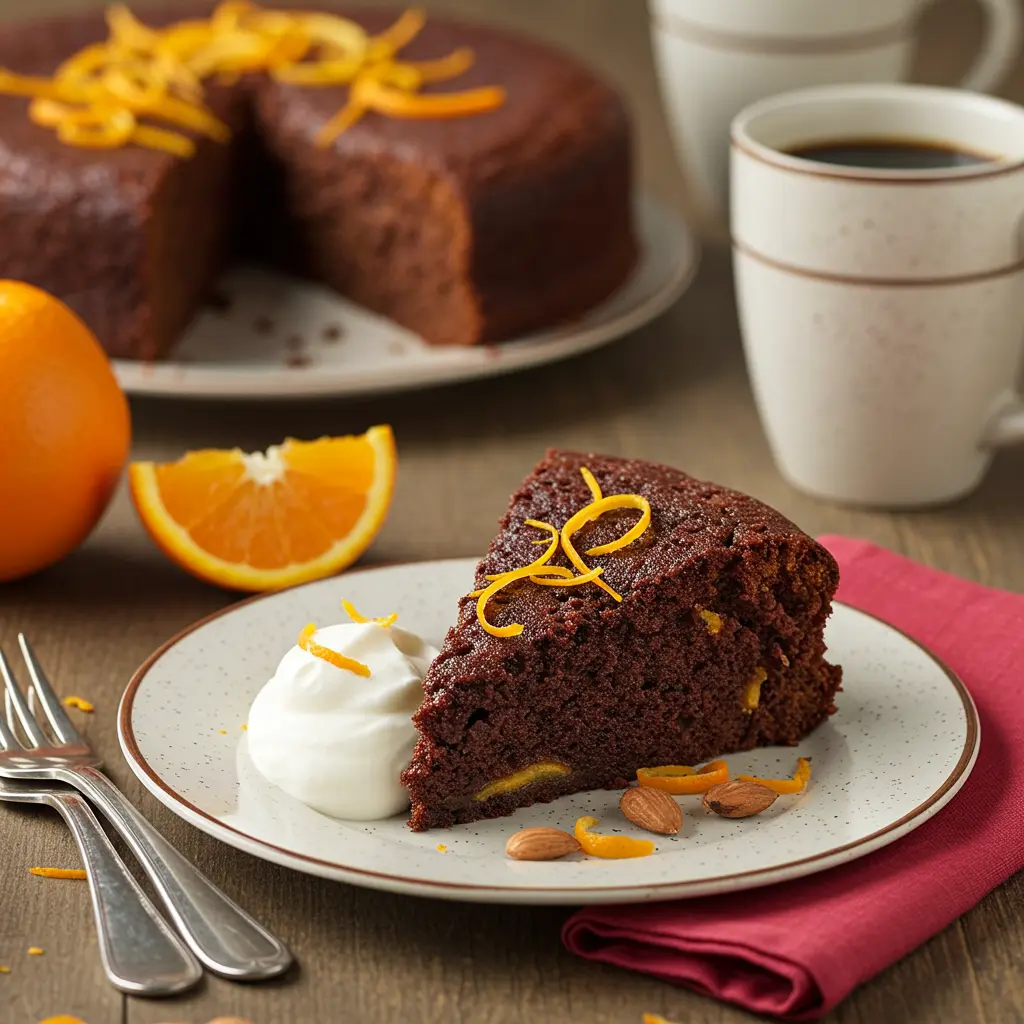
If you’re still on the fence about trying the prolific oven chocolate orange almond cake recipe, let us convince you why this recipe deserves a spot in your baking repertoire.
From its unique flavor combination to its versatility, this cake has something for everyone.
A Flavor Combination Like No Other
The Perfect Balance of Sweet and Citrusy
This cake brings together the rich depth of chocolate, the bright tang of orange, and the nutty warmth of almonds in a way that’s truly unforgettable.
Each bite offers a symphony of flavors that complement one another perfectly.
- Chocolate’s richness : Provides a decadent base that satisfies any sweet tooth.
- Orange’s brightness : Adds a refreshing contrast that keeps the cake from feeling overly heavy.
A Texture That’s Both Soft and Crunchy
The moist crumb of the cake pairs beautifully with the slight crunch of toasted almonds or chocolate chunks.
This interplay of textures makes every bite exciting and satisfying.
- Moist yet structured : The cake is soft without being soggy, thanks to moisture-rich ingredients.
- Crunchy accents : Almonds and chocolate add delightful pops of texture.
Versatility for Any Occasion
Suitable for Casual and Formal Events
Whether you’re baking for a family dinner or a special celebration, this cake fits the bill.
Its elegant flavors and presentation make it appropriate for formal gatherings, while its comforting taste makes it perfect for everyday enjoyment.
- Casual charm : Serve it with a scoop of vanilla ice cream for a cozy dessert.
- Elegant flair : Pair it with a drizzle of ganache and edible flowers for a refined touch.
Customizable to Your Preferences
This recipe is highly adaptable, allowing you to tweak it to suit your tastes. Swap almond flour for regular flour, adjust the sweetness, or experiment with different types of chocolate to make it your own.
- Dietary adjustments : Use gluten-free flour or dairy-free chocolate to accommodate dietary needs.
- Flavor variations : Add spices like cinnamon or cardamom for an extra layer of complexity.
A Recipe That Builds Confidence
Beginner-Friendly Yet Impressive
Even if you’re new to baking, this recipe is straightforward enough to follow while still yielding impressive results.
The step-by-step instructions and tips ensure that anyone can create a stunning cake.
- Clear guidance : The detailed steps leave little room for error.
- Room for creativity : Decorating and customizing the cake allow you to express your personal style.
A Crowd-Pleasing Dessert
This cake is certain to delight at any event. Its unique flavor profile and beautiful presentation are sure to earn you compliments and requests for the recipe.
- Universal appeal : The combination of chocolate, orange, and almonds is a crowd favorite.
- Memorable experience : Guests will remember this cake long after the event is over.
In conclusion, the prolific oven chocolate orange almond cake recipe is more than just a dessert—it’s an experience.
With its perfect balance of flavors, versatile nature, and ability to impress, this recipe is a must-try for bakers of all skill levels.


